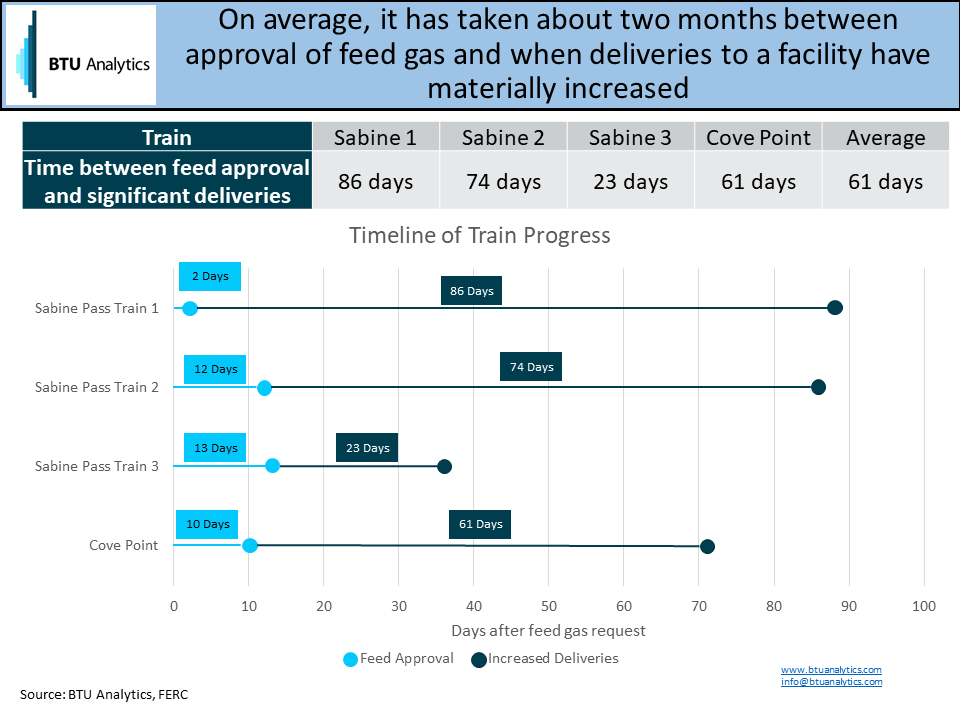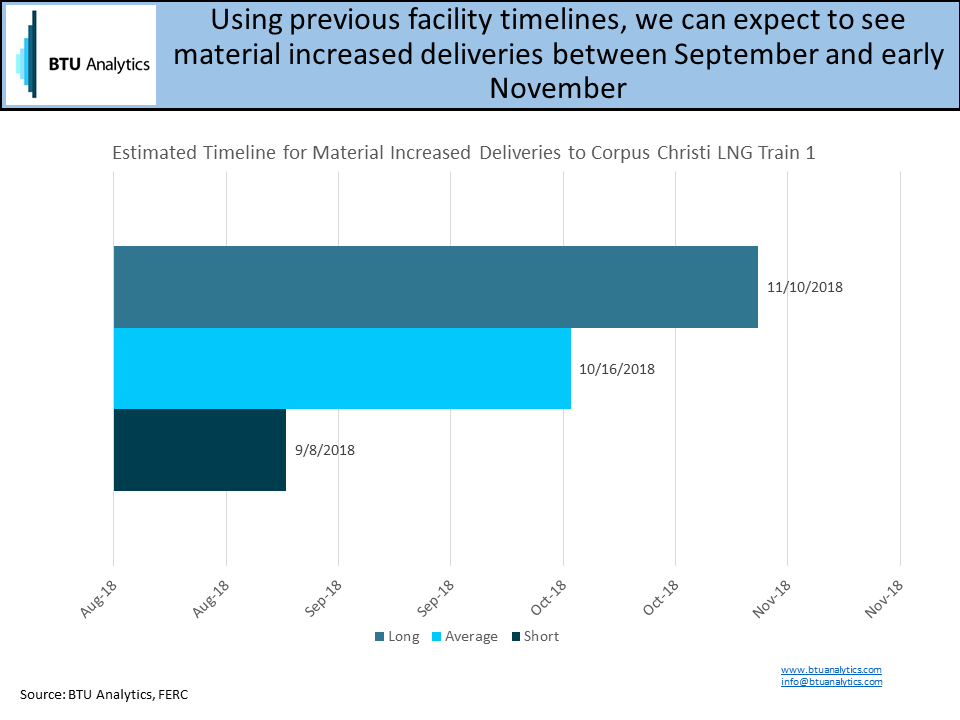On August 16, Cheniere’s Corpus Christi LNG Train 1 was approved by FERC to introduce feed gas. This is an important milestone for any LNG project, but the broader market is more concerned with when the facility will begin taking material amounts of gas. Over the past few years, deliveries to LNG terminals have materialized as a crucial source of US demand growth, growing from zero in 2015 to almost 4.0 Bcf/d in 2018. With LNG being a critical part of the demand story, this analysis will look back at the two facilities currently online, Sabine Pass and Cove Point, to estimate when we could see significant deliveries to Cheniere’s Corpus terminal.
Similar to pipeline projects, there is a regimented FERC approval process for LNG terminals. Two milestones of note are when the facility can introduce fuel and feed gas. Fuel gas is typically a small volume of gas used to run the facility. Feed gas is used as a feedstock, eventually being liquified into LNG and exported. Feed gas makes up the bulk of deliveries made to LNG facilities.
Historically, terminals do not see an immediate spike in deliveries after FERC approves feed gas. Looking back at Sabine Pass, the increase in deliveries is relatively easy to see for the first train of a facility. However, for the following trains, the timing of increased deliveries is more opaque since multiple trains are running and we can only see deliveries to the entire facility rather than individual trains. The graphic below outlines our assumptions surrounding timing for Sabine Pass’ Trains 1 – 3. For Train 4, there were a couple of factors that made timing unclear: maintenance on Train 3 and Hurricane Harvey. Due to these factors, Train 4 timing was omitted from the analysis.

In addition to Sabine Pass, a similar analysis was carried out for Dominion’s Cove Point LNG terminal in Maryland, which has only one train. The following chart summarizes the timelines for Sabine Pass Trains 1-3 and Cove Point.

Of LNG trains listed above, the time between FERC’s approval to introduce feed gas and having a significant increase in gas deliveries ranges from 23 to 86 days, with an average of 61 days. The following graphic applies those lags to Corpus Christi LNG, showing that an increase in deliveries for Corpus Christi is likely to occur between September 8 and November 10, with the midpoint falling in mid-October.

With a wave of production growth possibly coming from Appalachia this fall, increased demand from Corpus Christi LNG could help offset higher supply, but timing is an important factor. As an illustration of how important LNG demand timing is to the market, see our past write-up on the impacts of the Freeport LNG terminal delay. The timing of Corpus and the three other terminals expected to come online over the next two years are critical for US demand and must be considered alongside supply growth and infrastructure projects. For more on BTU Analytics’ take on how upcoming LNG projects fit into the broader gas market supply and demand dynamics, request a copy of the Henry Hub Outlook.









